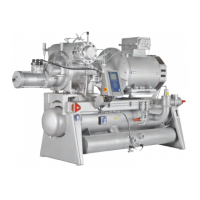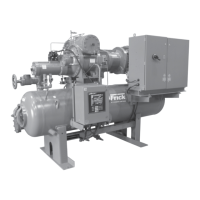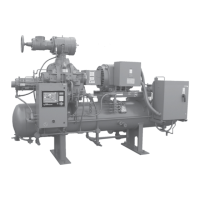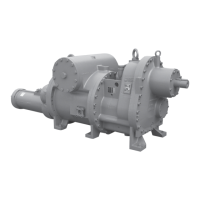Engineering manual - SAB 193-233-283 S A-frame (including ATEX)
008831 en 2020.10
29/168
Safety precautions
3.2.11 First aid for accidents with ammonia
(Chemical formula: NH
3
, refrigerant no.: R717)
General
Ammonia is not a cumulative poison. It has a distinctive, pungent odour that even at very low,
harmless concentrations is detectable by most people.
As ammonia is self-alarming, it serves as its own warning agent so that no person stays voluntar-
ily in hazardous concentrations. Since ammonia is lighter than air, adequate ventilation is the best
means of preventing accumulation.
Experience has shown that ammonia is extremely hard to ignite and under normal conditions a
very stable compound. At extremely high, though limited concentrations, ammonia can form
ignitable mixtures with air and oxygen and should be treated with respect.
Basic rules for first aid
Always call a doctor immediately.
Be prepared: Keep an irrigation bottle available containing a sterile isotonic (0.9%) NaCl-solu-
tion (salt water). A shower or a water tank should be available near all bulk installations with
ammonia.
When applying first aid, the persons assisting must be duly protected to avoid further injuries.
First aid measures
Inhalation: Immediately, move affected personnel into fresh air and loosen clothing restricting
breathing.
Call a doctor/ambulance with oxygen equipment.
Keep the patient still and warmly wrapped in blankets.
Do not in any way attempt to provoke vomiting or to give an unconscious person anything to
drink.
Oxygen may be given to the patient, if needed, but only when authorised by a doctor. If the pa-
tient stops breathing, apply artificial respiration.
Consumption: Not relevant.
Eyes: In case of injuries from liquid splashes or concentrated vapour, immediately rinse with
water (preferably using an eye rinser) and consult a doctor. Continue rinsing until otherwise noti-
fied by a doctor.
If the affected person wears contact lenses, these must be removed before rinsing.
Skin: In case of frostbite from liquid splashes or concentrated vapour, immediately wash with
large quantities of water until the pain stops.
Consult a doctor about actual frostbite.
After washing, apply wet compresses, wetted with a sterile isotonic (0.9%) NaCl-solution (salt
water), to affected areas until medical advice is available.

